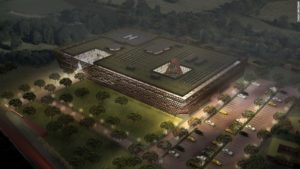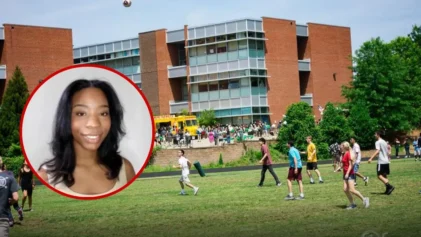
“Functional, buildable and economical,” is how Akosua Obeng, a Ghanaian architect at Orthner, Orthner & Associates, describes the style.
“Which is not a bad thing,” he adds. “It’s just that creativity maybe sometimes suffers.”
Concrete may still dominate as a building material, but construction trends are changing in Accra, Ghana’s capital. Now, local architects are just as likely to study from within their home country. With a new wave of talent emerging, so too is distinctly Ghanaian architecture.
And rather than be constrained by designs of the past, newly-minted architects are out to prove that they can be both practical and creative.
Ghana’s two architectural colleges are keen to impress upon its students the country’s rich building heritage.
“You learn a lot about traditional architecture,” says Obeng, “and you realize that we have a lot of good stuff that we didn’t develop somehow; we left it by the roadside.”
Local knowledge is informing the design work of local architects today, from color palettes to the types of materials used. One major change is the resurgence of wood — mirroring a Western trend, but from distinctly Ghanaian roots.
“Wood is actually our material… we are in the forest belt,” Obeng explains. “Wood is in abundance, [and] we are known as a timber exporter. But the weird thing is that the knowledge to build in wood has disappeared,” she says.
“From the colonial times we started building with concrete and block work… we just don’t know how to do it any more.”
By designing wooden structures, Obeng is reviving these lost skills. On one of her projects — a block of townhouses with a wooden facade — the architect has drafted in a retired German woodworker who Obeng says is “helping the locals and passing on the knowledge, bringing us back our wood knowledge.”
“Many people think building a house with wood is impossible,” says timber construction supervisor Latif Falicu. “This building has changed the architectural thinking of Ghana.”
Meanwhile, other architects are taking “home-grown” literally.
Frances Buckle-Thompson’s sixth floor garden atop the World Bank in the capital is Ghana’s first example of a green rooftop.
“It’s amazing,” she says, “we get to keep it green [and] you get to enjoy the scenery of Accra from this height.”
Not merely an aesthetic choice, Obeng explains that the roof “nullifies the heat island effect of the building… absorbing sunlight and cooling [it]. It’s also providing insulation for the roof at the same time … it’s just amazing.”
Read more at www.cnn.com


